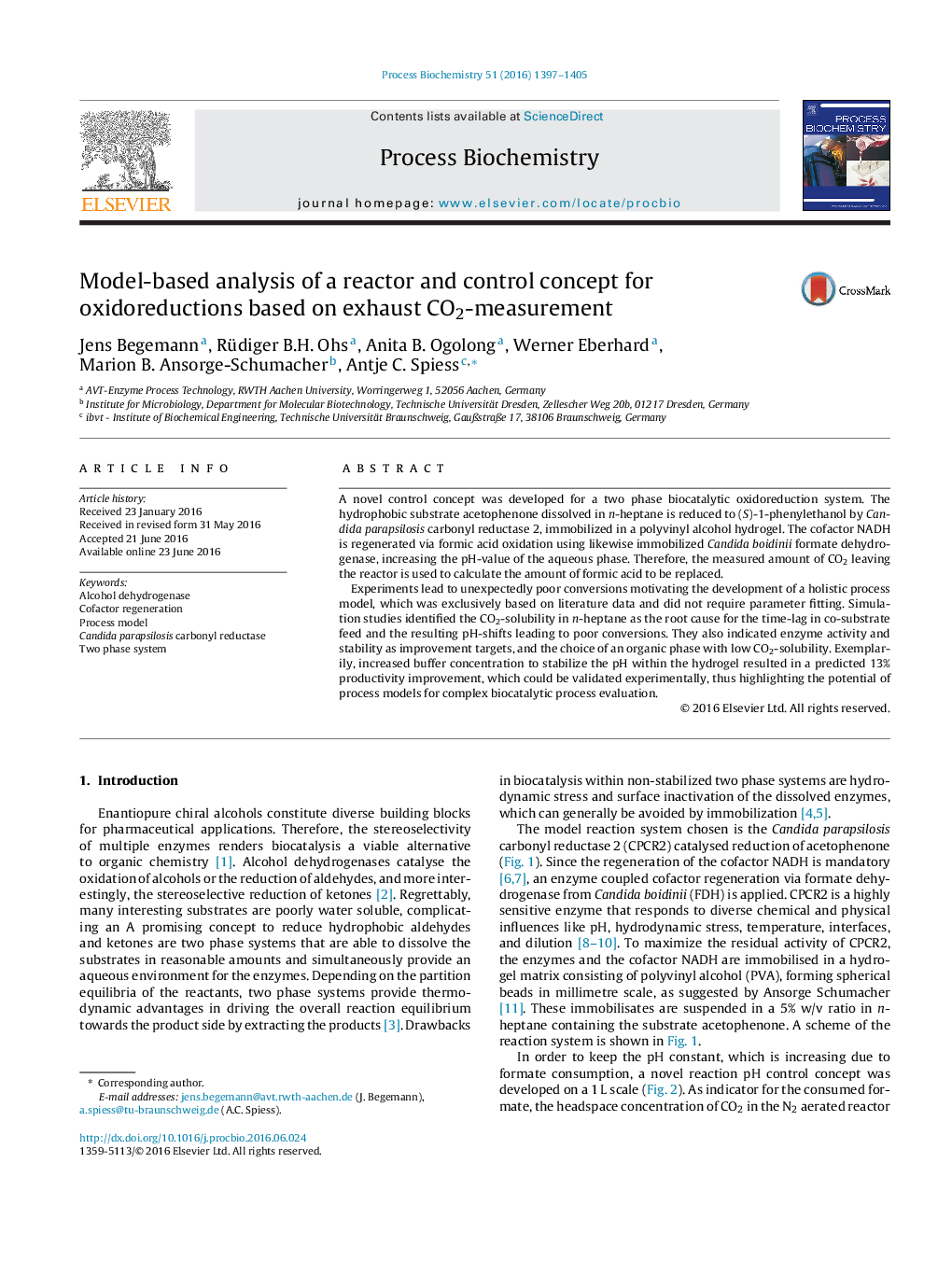| Article ID | Journal | Published Year | Pages | File Type |
|---|---|---|---|---|
| 6452993 | Process Biochemistry | 2016 | 9 Pages |
â¢A pH control concept for a two phase organic/hydrogel oxidoreduction system was developed.â¢A holistic a-priori model for the pH-controlled process was proven to be predictive.â¢Simulation studies demonstrate potential and limits of the controlled process.
A novel control concept was developed for a two phase biocatalytic oxidoreduction system. The hydrophobic substrate acetophenone dissolved in n-heptane is reduced to (S)-1-phenylethanol by Candida parapsilosis carbonyl reductase 2, immobilized in a polyvinyl alcohol hydrogel. The cofactor NADH is regenerated via formic acid oxidation using likewise immobilized Candida boidinii formate dehydrogenase, increasing the pH-value of the aqueous phase. Therefore, the measured amount of CO2 leaving the reactor is used to calculate the amount of formic acid to be replaced.Experiments lead to unexpectedly poor conversions motivating the development of a holistic process model, which was exclusively based on literature data and did not require parameter fitting. Simulation studies identified the CO2-solubility in n-heptane as the root cause for the time-lag in co-substrate feed and the resulting pH-shifts leading to poor conversions. They also indicated enzyme activity and stability as improvement targets, and the choice of an organic phase with low CO2-solubility. Exemplarily, increased buffer concentration to stabilize the pH within the hydrogel resulted in a predicted 13% productivity improvement, which could be validated experimentally, thus highlighting the potential of process models for complex biocatalytic process evaluation.
Graphical abstractDownload high-res image (212KB)Download full-size image
